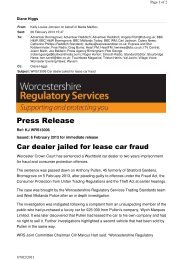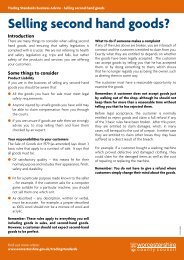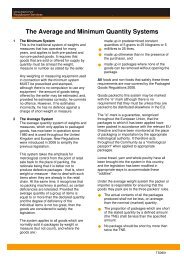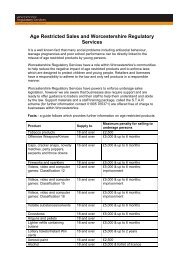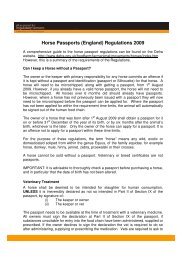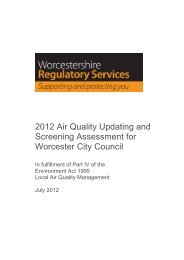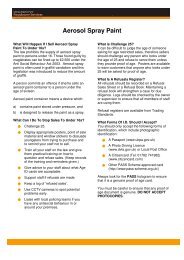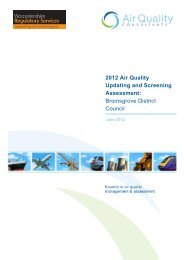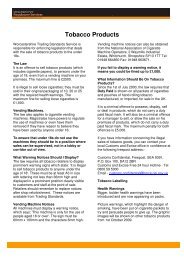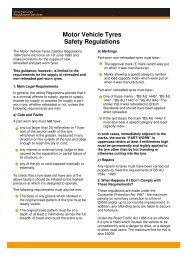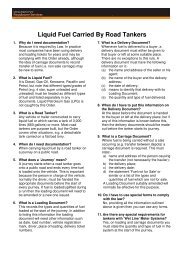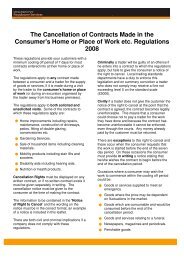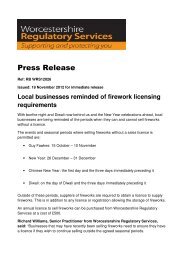Certification of Weighbridge Clerks - Worcestershire Regulatory ...
Certification of Weighbridge Clerks - Worcestershire Regulatory ...
Certification of Weighbridge Clerks - Worcestershire Regulatory ...
You also want an ePaper? Increase the reach of your titles
YUMPU automatically turns print PDFs into web optimized ePapers that Google loves.
CERTIFICATION OF WEIGHBRIDGE CLERKS<br />
OPERATING PUBLIC WEIGHBRIDGES<br />
Who Does This Leaflet Cover?<br />
Any person who operates a Public <strong>Weighbridge</strong>.<br />
What Rules Apply?<br />
All persons who operate Public<br />
<strong>Weighbridge</strong>s need a Certificate <strong>of</strong><br />
competence issued by their local Chief<br />
Inspector <strong>of</strong> Weights and Measures.<br />
The certificates are issued free <strong>of</strong> charge<br />
following a brief oral or practical test.<br />
A summary <strong>of</strong> the test is given below.<br />
The test will be confined to the type <strong>of</strong><br />
weighbridge the operator uses and the<br />
certificate is valid only for that type <strong>of</strong><br />
weighbridge.<br />
How Are Tests Arranged?<br />
By contacting our Calibration Team on:<br />
0845 3303313<br />
Summary <strong>of</strong> test that will be given to a weigh<br />
clerk to ascertain that they have sufficient<br />
knowledge to perform their duties properly.<br />
They will be asked:-<br />
1. To balance the machine with no load on the<br />
plate by means <strong>of</strong> the adjustment provided;<br />
2. The meaning <strong>of</strong> the words 'gross', 'tare' and<br />
'net';<br />
3. The names <strong>of</strong> the units <strong>of</strong> weight in general<br />
use (Imperial and Metric) and must be<br />
conversant with their usage;<br />
4. To subtract correct weights on specimen<br />
tickets;<br />
5 (a) to operate the weighbridge with a load<br />
on the plate, read the weight correctly,<br />
and satisfactorily operate any ancillary<br />
equipment (e.g. a ticket printer);<br />
(b) demonstrate the ability to reset the date<br />
and time on an electronic ticket printer<br />
following a power failure;<br />
(c) where relevant to the equipment the<br />
need to have basic computer literacy<br />
and a knowledge <strong>of</strong> PC based weighing<br />
instruments<br />
6. To name common faults that can lead to<br />
incorrect weighings, for example, binding <strong>of</strong><br />
the plate against the frame, vehicles not<br />
fully on the plate, flooded pits, etc;<br />
7. (a) to name precautions to be taken when<br />
weighing, for example, to be able to<br />
see the plate properly, to ensure that<br />
no-one is still on the vehicle, to see that<br />
a trailer is uncoupled from its towing<br />
vehicle if the latter is not being<br />
weighed, only to weigh vehicles or<br />
items which exceed the marked<br />
minimum load <strong>of</strong> the equipment, etc.<br />
(b) Weigh <strong>Clerks</strong> should be aware that<br />
overloading a vehicle is an <strong>of</strong>fence and<br />
should be prepared to assist drivers<br />
who want to check gross (including<br />
driver, mate etc) or axle weights where<br />
possible;<br />
8. If they understand the responsibilities<br />
placed upon them by the Weights and<br />
Measures Act 1985, when these<br />
responsibilities have been explained to<br />
them;<br />
9. To make out a specimen weighbridge ticket<br />
after weighing a load, inserting all the<br />
particulars required, namely date, time,<br />
registered number <strong>of</strong> vehicle, load, and<br />
details <strong>of</strong> weight found and to be aware <strong>of</strong><br />
recording each weighing and to retain the<br />
records for at least two years;<br />
10. To name the precautions to be taken in<br />
making out tickets, such as not leaving<br />
blank weight spaces (these should be<br />
crossed through or cancelled by words such<br />
as "not ascertained", or "vehicle not tared"),<br />
not inserting a tare weight unless it has<br />
been ascertained by weighing, not<br />
accepting a tare weight taken more than 24<br />
hours previously or on another machine,<br />
using ink or indelible pencil for entries,<br />
avoiding alterations, etc;<br />
11. In appropriate cases, to convert imperial<br />
and metric weights. Conversion tables may<br />
be used.
How to contact <strong>Worcestershire</strong> <strong>Regulatory</strong> Services<br />
Consumer Advice - regarding issues relating to ‘Consumer goods or Services’ contact Citizens Advice<br />
Consumer Service on 08454 040506, alternatively research your consumer rights on the HM<br />
Government, DirectGov website www.direct.gov.uk<br />
Business Advice only - telephone 0845 330 3313, or email wrsenquiries@worcsregservices.gov.uk<br />
General Customer Enquiries - contact the <strong>Worcestershire</strong> Hub on 01905 822799 (Mon – Fri 8am-8pm,<br />
Sat 9am-5pm) or visit your local Customer Service Centre. Opening times and locations can be found at<br />
www.whub.org.uk<br />
Postal address – <strong>Worcestershire</strong> <strong>Regulatory</strong> Services, PO Box 866, Worcester, WR1 9DP<br />
Find us on Facebook: facebook.com/worcsregservices<br />
Follow us on Twitter: @worcsrs



